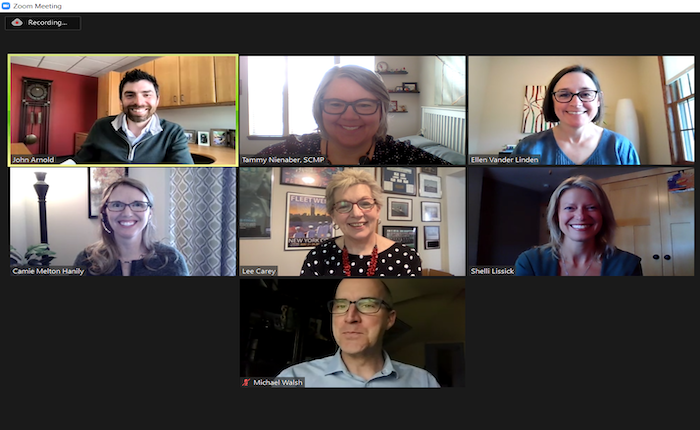As the job market is springing back to life and communications talent becomes harder to find, now may be the perfect time to consider creating or maximizing a hybrid communications team that blends in-house and outsourced experts to get the job done. The International Association of Business Communicators (IABC) Minnesota chapter recently hosted a professional development panel discussion on this hot topic. Hosted by Tammy Nienaber, director of franchise communication, enterprise, at Self Esteem Brands and IABC Minnesota vice president of professional development, and expertly facilitated by independent communications professional Lee Carey, panelists represented a range of perspectives, including:
- In-house communications leader: Camie Melton Hanily, global marketing and communications director, hydraulics at Eaton Corporation
- Freelance/independent contractor: Ellen Vander Linden
- Staffing solutions group: John Arnold, managing partner and co-CEO at Celarity
- Strategic communication agency: Yours truly 😊
Leveraging agency partners or contractors as part of a hybrid team can bring a new, fresh perspective, ideas and energy to an existing team – as well as become an extension of your team to provide a specialized skill on a project or ongoing basis, or offset workload if your existing team’s bandwidth is too tight.
If you’re contemplating developing or maximizing your existing hybrid team, here are a few key takeaways to consider from our conversation:
- Consider the skill set and frequency to determine the best fit. Camie leads teams in the Americas and Europe that are split nearly 50/50 between in-house, agency and contractor partners. The key factors she looks to when deciding between hiring in-house or outsourcing include the type of skill needed, how often that skill set is needed and if it requires a lot of expensive equipment (e.g. video equipment). If it’s within a family of skills that would be leveraged frequently, they typically hire in-house. If it’s a specialized skill that would be leveraged on occasion, they find an agency partner or contractor. For example, Camie supplements her in-house team with contractors and agency partners for media buying, graphic design, email management, long-form writing and video production.
- Set clear goals and expectations. It may sound like a no-brainer, but this is a biggie that can mean the difference between positive results and total frustration for both parties. John noted that when he’s matching talent with clients, the most successful partnerships are made when clients are crystal clear about what they’re looking for, budget parameters, timeline, number of hours, etc.
- Provide feedback. Being Minnesota Nice, it can feel difficult to provide feedback to agency partners and contractors – but we welcome and need feedback to make sure we’re delivering on our clients’ expectations. At Bellmont Partners, we schedule ongoing check-in conversations with our clients to discuss expectations, any shifts in priorities or budgets, and make sure we’re all on the same page. At Celarity, they have an automated monthly check-in email that goes to both the client and the contractor, asking both sides to rate the partnership on a 10-point scale. If the response comes back at anything other than a 9 or 10, they ask for more feedback and communicate with both the contractor and the client, bringing them together to make them aware of and fix trouble spots.
Your hybrid team – whether it includes agency partners and/or contractors – should be collaborative, flexible and transparent, which are our core values. For tips on finding a good agency fit, be sure to check out this post. And if you’d like to discuss partnering as you build your hybrid team, we’d love to hear from you and explore how we can support your team’s goals and needs.

